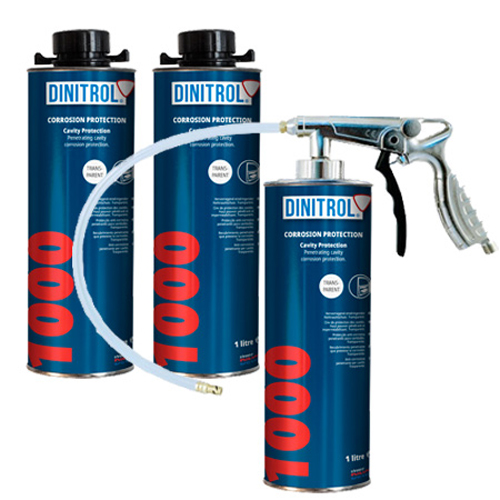Posted by Rejel on 26th Jun 2024
The difference between Dinitrol cavity waxes explained
As the range of Dinitrol products continues to increase, we thought it would be useful to explain the differences between the main cavity wax products that are most popular amongst DIY enthusiasts and professionals alike.
In this article we will take a look at the three most popular rust proofing cavity waxes and the best way to get the most out of these products.
Dinitrol ML cavity wax
This is a very thin, low viscosity brown cavity wax that is ideal for spraying into the chassis, box sections and hard to reach areas. Dinitrol ML is an all year round product and doesn't need warming prior to application.
Applied in conjunction with an underbody wax ( Dinitrol 4941) it acts as an adhesion promotor and can be used over previously applied rust prevention applications.
Dinitrol ML contains rust inhibitors and will help stop ongoing corrosion by forming a soft, wear resistant film that effectively eliminates dampness.
Dinitrol 3125HS cavity wax
In many respects Dinitrol 3125HS has similar properties and uses as Dinitrol ML. The main difference between them is that Dinitrol 3125HS has a high viscosity. This means that it is very thick and will require warming prior to use.
This product is better suited to warm weather and can be used as a thin underbody coating where high abrasion is unlikely.
For improved performance on more corroded surfaces, Dinitrol ML can be used as a pre-treatment to Dinitrol 3125HS.
Dinitrol 3125 HS penetrates rust and dirt preventing further corrosion. Even damp and dirty surfaces will not affect its superb performance.
Dinitrol 1000 Cavity Wax
If you're looking for a clear cavity wax, the 1000 is an ideal product. A thinner cavity wax, it is great for penetrating into the door skins, bonnets and box sections. Transparaent and highly water repellent, this is a great wax to use at low temperature. Dinitrol1000 is a Polyethyelene based wax and is re-wash resistant.
The product is mainly based on synthetic waxes and corrosion inhibitors. When the solvent has evaporated the product leaves a transparent, waxy, water repellent protective film, giving excellent corrosion protectionIdeal for door skins, bonnets, boot lids and box sections

